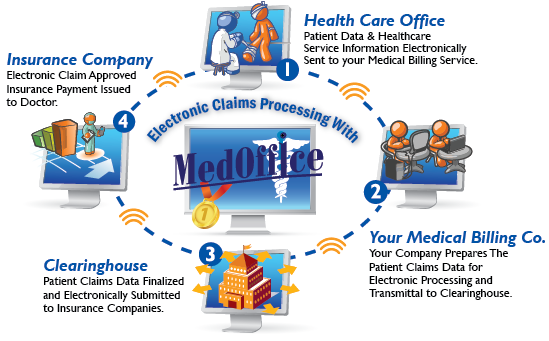The Ultimate Guide to Streamlining the Credentialing Process in Healthcare

Are you feeling overwhelmed by the complex and time-consuming process of credentialing in the healthcare industry? Look no further! In this comprehensive guide, we will walk you through everything you need to know about streamlining the credentialing process in healthcare.
Credentialing plays a vital role in ensuring that healthcare providers, such as doctors, therapists, and medical practices, meet the necessary qualifications and standards to deliver high-quality care. It involves verifying qualifications, experience, and professional history to establish trust and credibility.
From medical credentialing to provider credentialing and insurance credentialing, we will cover it all. Cigna insurance credentialing services will delve into the intricacies of the credentialing process, discussing its various stages and how they flow seamlessly together. Additionally, we will explore the role of insurance credentialing companies and specialists in simplifying this process.
Insurance credentialing is an essential aspect of healthcare credentialing, allowing providers to become "in-network" for insurance companies. ABA provider credentialing will address the steps and requirements for insurance credentialing, helping you navigate the intricate world of insurance panel credentialing.
Searching for the best credentialing companies and software? We've got you covered! Our guide will reveal the top credentialing services, software, and solutions available in the market today. Discover how these tools can enhance your credentialing process and save you valuable time and resources.
With our expert advice and insights, you'll gain a deeper understanding of the credentialing process for providers, including physicians, medical providers, and healthcare professionals. We'll also shed light on the importance of proper credentialing for medical insurance, ensuring a smooth billing and reimbursement process.

Don't let the credentialing process become a burden. Let us be your guide as we explore the world of credentialing in healthcare and equip you with the knowledge and tools to streamline this essential procedure. Healthcare credentialing to take control and optimize your credentialing process for better efficiency and improved patient care.
Understanding the Credentialing Process
Credentialing is an essential process in healthcare that ensures healthcare providers, such as doctors and other medical professionals, meet certain standards and qualifications to deliver quality care to patients. It involves verifying and evaluating the credentials, education, experience, and other qualifications of healthcare providers.
In the credentialing process, healthcare providers submit their information, such as education, licensure, work history, and references, to credentialing bodies, which can include insurance companies, hospitals, or other healthcare organizations. These credentialing bodies then review and assess this information to determine if the provider meets their specific requirements and standards.
The credentialing process in healthcare typically involves several steps, including collecting and verifying the necessary documentation, conducting background checks, and evaluating the provider's competence and adherence to ethical standards. This thorough evaluation ensures that healthcare providers are qualified and capable of providing safe and effective care to patients.
By undergoing the credentialing process, healthcare providers gain important credentials, such as medical licenses, certifications, and hospital privileges. These credentials help providers gain acceptance onto insurance panels, enabling them to receive reimbursement for the services they provide to patients covered by those insurance plans.
Overall, the credentialing process is a crucial aspect of healthcare, ensuring that providers are qualified, competent, and meet the necessary standards to deliver high-quality care to patients. It is an important step in maintaining the integrity and safety of healthcare delivery systems.
Challenges Faced in Healthcare Credentialing
The credentialing process in healthcare can be quite complex and challenging. Healthcare organizations and providers often encounter several obstacles that can delay or hinder the credentialing process. Let's explore some of the key challenges faced in healthcare credentialing.
Lengthy and Time-Consuming Process: One major challenge in healthcare credentialing is the time it takes to complete the process. Credentialing involves thorough verification of a healthcare provider's qualifications, licenses, education, and work history. This process can be slow and time-consuming, often requiring extensive documentation and multiple steps that need to be followed meticulously.
Inconsistent and Varying Requirements: Another challenge is the lack of standardization and consistency among different credentialing entities and insurance companies. Each organization may have its own specific requirements, documentation, and processes for credentialing. This inconsistency can lead to confusion and inefficiency, as providers must navigate through different sets of criteria and paperwork for each credentialing application.
Managing Updates and Renewals: Maintaining up-to-date credentials is vital for healthcare providers. However, keeping track of renewal dates, required documentation, and ensuring timely updates can be a challenge. Failure to manage these updates effectively can result in providers being deemed "out-of-network" or facing reimbursement issues with insurance companies.
Overall, the challenges faced in healthcare credentialing revolve around the complexity of the process, the lack of standardization among different entities, and the need for efficient management of ongoing updates and renewals. Despite these challenges, healthcare organizations and providers can overcome them by adopting streamlined processes, leveraging technology solutions, and staying proactive in credentialing management.
Tips for Streamlining the Credentialing Process
When it comes to streamlining the credentialing process in healthcare, there are several tips that can help healthcare providers and insurance companies optimize their operations and save time.
Firstly, utilizing technology is crucial in simplifying the credentialing process. Implementing a reliable credentialing software can automate many manual tasks, such as data entry and document management, reducing paperwork and minimizing human errors. This digital approach allows for faster processing and smoother communication among all stakeholders involved in the credentialing process.
Secondly, maintaining clear and up-to-date documentation is essential for efficient credentialing. Healthcare providers should ensure that all required information, such as licenses, certifications, and insurance documents, are easily accessible and regularly updated. Creating a centralized database or cloud-based storage system can streamline the retrieval and sharing of necessary credentials, facilitating a faster and more accurate credentialing process.
Lastly, fostering effective collaboration between healthcare providers and insurance companies is vital for a streamlined credentialing process. Regular communication and open channels of dialogue can help address any potential issues or discrepancies promptly. By establishing clear protocols and expectations, both parties can work together towards a more efficient and expedited credentialing process.
By implementing these tips, healthcare providers and insurance companies can streamline their credentialing processes and focus more on providing excellent patient care. Utilizing technology, maintaining accurate documentation, and fostering collaboration are key factors in optimizing the credentialing process in healthcare.
